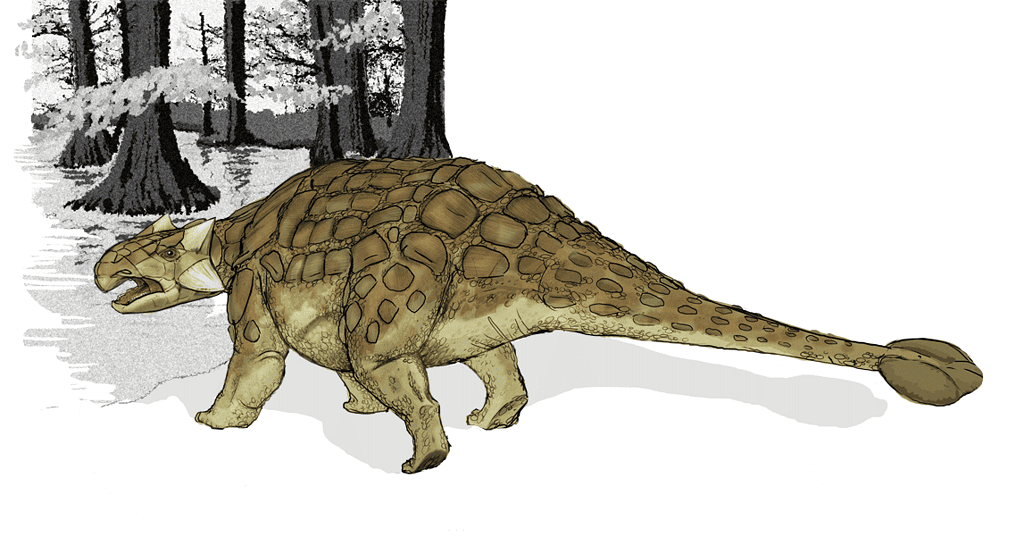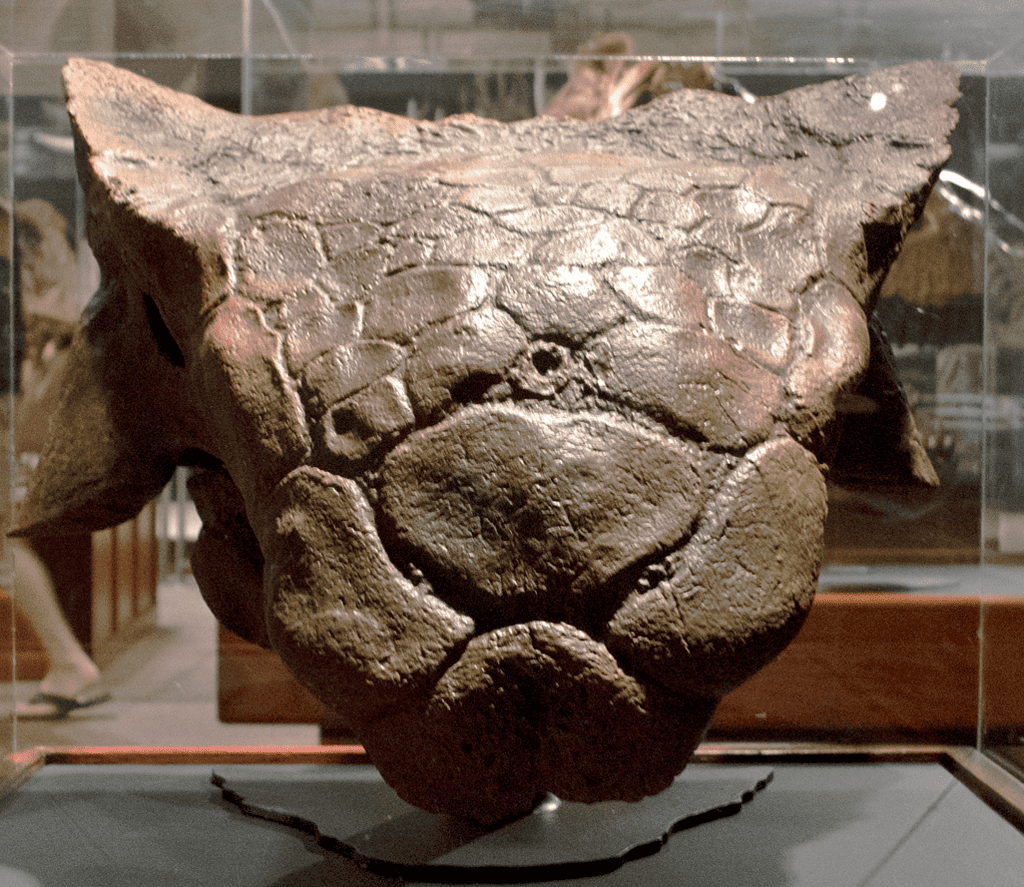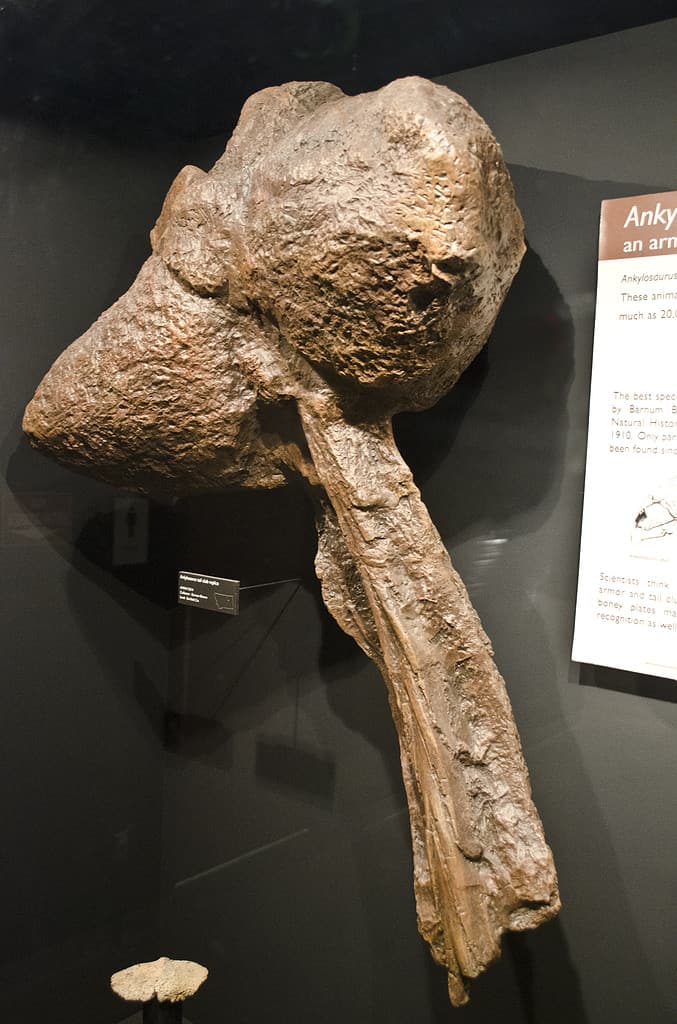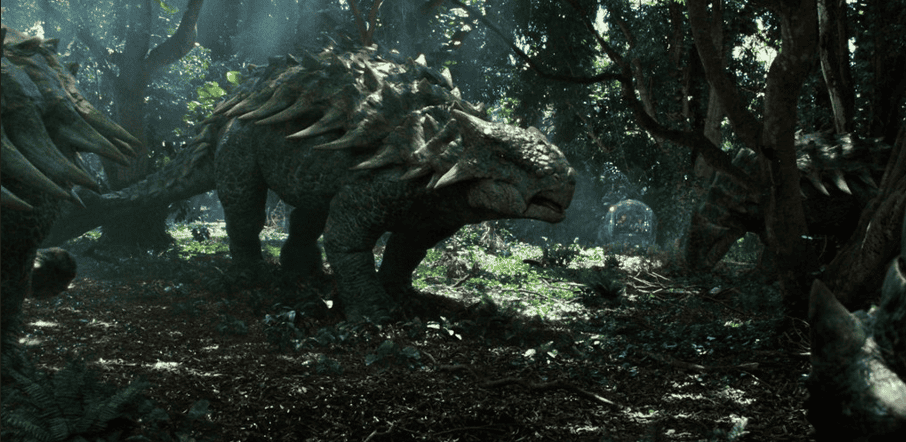Ankylosaurus (pronounced ANG-kə-loh-SOR-əs), the Cretaceous “tank”, roamed Western North America approximately 68 to 66 million years ago. Since its discovery, this genus quickly became a fan favorite due to its remarkable appearance and evolutionary traits. Despite limited fossils, Ankylosaurus represents the ankylosaurid family with its distinctive features and robust defense mechanisms. This article explores the Ankylosaurus through various lenses, including its discovery, anatomical features, habitat, diet, and defensive mechanisms. In other words, a comprehensive overview of this absolute unit.

Discovery the Ankylosaurus
Ankylosaurus‘ story began with an American Museum of Natural History expedition in 1906, spearheaded by Barnum Brown. The discovery of the type specimen in Montana’s Hell Creek Formation laid the groundwork for what would become one of the most iconic dinosaurs in paleontological history. This initial find comprised various skeletal parts, including the skull, vertebrae, and distinctive armor plates. Ankylosaurus‘ naming and classification brought to light its unique features. The dinosaur genus name, Greek for “Fused Lizard”, refers to the fusion of bones as a defense mechanism. The species name magniventris highlights its broad girth.

Subsequent Ankylosaurus discoveries were made across North America, from the Lance Formation in Wyoming to Alberta’s Scollard Formation. Each find, varying in skeleton completeness, added pieces to the puzzle. Notably, the discovery of a tail club in Alberta marked a major leap in decyphering Ankylosaurus‘ defensive capabilities. This finding marked the first and only tail club known for this genus. The specimen included a complete skull, mandibles, and parts of the tail skeleton.
Anatomy and Armor
Ankylosaurus is estimated to be the largest ankylosaurid, growing up to 8 meters long and as heavy as 8 tons. This animal’s physique was a wonder of natural engineering. It was a quadrupedal fortress with a broad, robust build, equipped with a unique set of defenses. Ankylosaurus‘ unusual skull was wide and low and adorned with horns that pointed backward from the back of the head. Unlike its relatives, Ankylosaurus had sideways-facing nostrils. The front part of its jaws was covered in a beak, used for cropping vegetation, with rows of small, leaf-shaped teeth further back.

However, the most distinctive feature of Ankylosaurus was its armor. Osteoderms, or bony plates, covered its body, offering close to impenetrable protection. These plates, along with bony half-rings around the neck, acted as armor against predators. But the massive bony knob at the tail’s end served as the main predator deterrent. Paleontologists estimate that it could have been capable of delivering devastating blows to any predator daring enough to even approach.
Habitat and Diet
Ankylosaurus thrived in the ecosystems of late Cretaceous North America. The landscape was supposedly a mosaic of rivers, forests, and coastal plains. Fossils suggest it inhabited regions that would now encompass parts of Montana, Wyoming, Alberta, and Saskatchewan. The environment was dynamic, with a climate that supported a rich variety of plant life. Moreover, Ankylosaurus shared these regions with other iconic dinosaurs, such as Tyrannosaurus, Triceratops, and Edmontosaurus.

The broad muzzle of Ankylosaurus indicates it was a non-selective browser, feeding on a wide range of vegetation. This dinosaur likely consumed ferns, low-growing shrubs, and perhaps even fruit, using its beaked mouth to strip vegetation. The structure of its teeth and jaws suggests minimal chewing, relying instead on a large gut capable of fermenting plant material to extract nutrients. This dietary strategy allowed Ankylosaurus to thrive in its environment, taking advantage of the abundant plant resources.
The Tail Club
The armored body and menacing tail club speak of a life spent under the constant threat of predators. The ankylosaurid evolutionary journey reflects a lineage finely tuned to survival in the most challenging Cretaceous environments. Consisting of two large osteoderms at the end of the tail, the tail club could deliver powerful blows, capable of deterring even the most determined of predators. The structure of the tail, with vertebrae fused into a rigid rod, allowed for a swinging motion that could generate significant force upon impact. Predators such as Tyrannosaurus would have been formidable adversaries. However, the combination of Ankylosaurus‘ armor and tail club likely made it an unappealing target for attack.

Recent discoveries regarding another ankylosaurid, Zuul crurivastator, have shed new light on the function of the tail club. The fossilized remains of this animal show marks of intraspecific combat. Zuul, a close relative of Ankylosaurus, showcases well-preserved tail clubs that bear evidence of wear and healing. Also, shattered and healed osteoderms in the pelvic region suggest repeated use of the club in fights with other members of its species. These discoveries challenge previous perceptions of ankylosaurids as solely defensive creatures, highlighting a complex behavior pattern that includes aggression and social hierarchy.
The Legacy of Ankylosaurus
Ankylosaurus is no stranger to popular culture, making appearances in films, television series, and video games. First appearing more like a cameo in “Jurassic Park 3”, we get a more detailed look at the animal in “Jurassic World” where it is defending itself against Indominus rex.

In animated shows and movies, “The Land Before Time” series introduces a young Ankylosaurus named “Mr. Thicknose”, who, despite his size, is depicted as wise and kind-hearted. Video games like “ARK: Survival Evolved” offer an interactive experience with Ankylosaurus, allowing players to tame and utilize it for gathering resources. Documentaries such as “Walking with Dinosaurs” provide a more scientific look at the Fused Lizard, blending detailed animations with factual information to educate viewers about its speculated lifestyle and environment.






